Dear Readers,
Welcome to the last Four Degrees post of 2013! I’m back home with family and here the Christmas festivities happen today, on Christmas eve. So before I focus my attention on wrapping my last present and stuffing the goose for our family meal, here is the second instalment of our Christmas special of ‘What’s Geology got to do with it’! What has geology got to do with the Three Wise Men, popular Christmas presents or Rudolph the reindeer? Find out here… and a very merry Christmas!
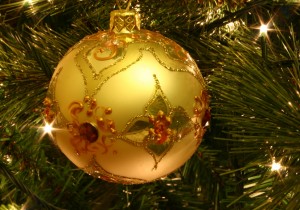
Source: Kris de Curtis, Wikimedia Commons.
The Gifts of the Three Wise Men
Christmas Wishlist – Tablets!
Reindeer
1. The Gifts of the Three Wise Men
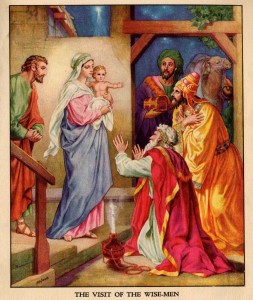
The Visit of the Three Wise Men, ca. 1900 – Source: Wikimedia Commons.
In Christian tradition, the Three Wise Men, known as Melchior, Caspar and Balthazar, visited Jesus after his birth. Each brought a gift from his land: gold (from Persia), frankincense (from India) and myrrh (from Arabia). These gifts were common offerings and presented to Jesus. Gold was seen as valuable, myrrh was used as an anointing oil, and frankincense as a perfume.
Gold –
Gold is a precious metal and was already used for coinage, jewelry and art before written historical records began. Some of the oldest gold artefacts were found in graves in Bulgaria, dating back to the 5th millennia BC.
Gold is found as ores in rocks, typically as a mixture of gold and silver, It generally occurs as tiny particles embedded in the rock, accompanied by other minerals such as quartz and pyrite (‘Fool’s gold’), or as grains, flakes or nuggets that have eroded from the rock and can be found in rivers or loose soil deposits.
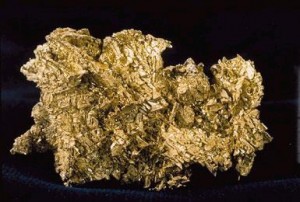
Gold nugget – Source: USGS, Wikimedia Commons.
It is estimated that a total of 165,000 tonnes of gold has been mined in the world, roughly half of that from South Africa. In 2007, China became the world’s largest gold producer.
The gold brought to Jesus by Melchior could have originated from Persia, modern-day Iran. Iran contains several gold-rich regions, and total gold reserves are estimated to be 320 tonnes. Until 2012, the city of Takab contained Iran’s largest gold mine, with over 4 tonnes of gold reserves. Recently, three new gold mines have been discovered in the city of Saqqez in the West of the country.
Frankincense –
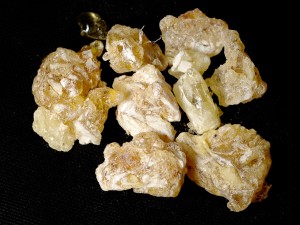
Frankincense from Somalia – Source: Snotch, Wikimedia Commons.
Frankincense is an aromatic resin that comes from four main species of Boswellia trees. It is used in perfumes and aromatherapy and is considered valuable for its healing abilities. Frankincense is also used in religious rituals in many Christian churches. It is thought that the biblical frankincense brought by Caspar was extracted from the tree Boswellia sacra.
Frankincense can be found in different grades, depending on the time of harvesting of the resin. It is extracted by scratching the bark of the tree so that the resin bleeds out and hardens, forming frankincense ‘tears’. There are different sorts of resin, depending on the tree species producing it as well as on the geology of the soil upon which the tree grows and the climate under which it develops.
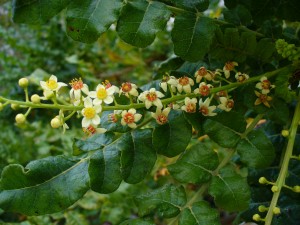
Flowers from a Boswellia sacra tree – Source: Scott Zona, Wikimedia Commons.
The Boswellia sacra tree is native from the Arabian peninsula and northeastern Africa. It is abundant in Somalia and the arid woodlands of the slopes of the Dhofar mountains of Oman and Yemen. The tree is famous for its ability to grow in very unforgiving environments. It typically develops on calcareous soils (limy or chalky soils mostly composed of calcium carbonate) and is found on rocky slopes and ravines. The trunk is made of disk-shaped bulbs, which ensures that the tree remains firmly anchored in the rock, even in violent storms.
Myrrh –
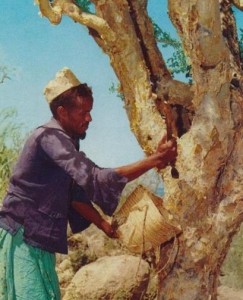
Man collecting myrrh in Somalia – Source: Somalia Ministry of Information and National Guidance, Wikimedia Commons.
Myrrh is another type of aromatic resin. It was very popular in the ancient world and was used as medicine in ancient China and Egypt, as well as for Egyptian religious rituals and mummification. It was also used in cosmetics, and Greek soldiers used it on the battlefield as an oil to stop wounds from bleeding.
Myrrh comes from the thorny tree Commiphora myrrha. The tree is native from the Arabian peninsula (mainly Yemen), Somalia, Eritrea and Ethiopia. Like frankincense, myrrh is also extracted by cutting through the bark and sapwood to bleed the tree. Commiphora myrrha grows best in thin soils containing limestone, at altitudes of 250 m to 1,300 m, with a mean annual rainfall of 23 to 30 cm.
2. Christmas Wishlist – Tablets!
Be it standard or mini, Microsoft, Nexus or Apple, the tablet remains a very popular Christmas present. So as we are handling our shiny new toys, let’s ask ourselves: what does geology have to do with it?
A typical tablet is made of aluminium, copper, silicon, gold, nickel, glass, steel and plastic. The raw metals used must be mined before making their way to the factory and I will use aluminium and copper as examples.
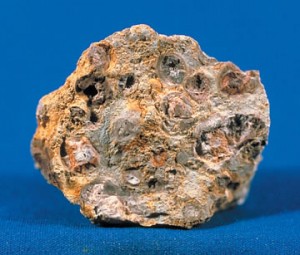
Bauxite – Source: Wikimedia Commons.
Aluminium is a silvery-white metal. It is tough, conducts electricity and is resistant to corrosion. Most metallic aluminium is produced from an ore called bauxite. Bauxite is formed in tropical climates when rocks containing little iron and silica are weathered by the elements. This ore is primarily mined from Australia, China, Guinea, Brazil, India or Russia. Other possible sources of aluminium include rocks such as shales or clays.
The production of aluminium takes place in three stages. First, the ore is mined, then it is refined to recover alumina (aluminium oxide) from bauxite, and finally it is smelted to produce aluminium from alumina. The ore is mined by what is called open cut mining, i.e. surface methods of mining where the soil is removed by bulldozers and scrapers. The bauxite lying below is then removed before being loaded into trucks or conveyor belts to be transported to refineries.
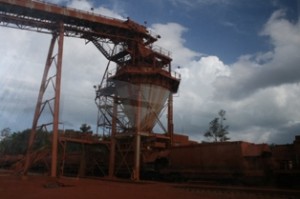
Weipa bauxite mine in Australia – Source: Wikimedia Commons.
Copper is a soft and malleable red-orange metal. It conducts heat and electricity and is used in many metal alloys. It has been used as a material for thousands of years but nearly all of the copper ever extracted has been mined since 1900.
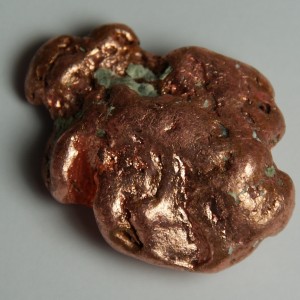
Copper nugget – Source: Jurii, Wikimedia Commons.
Most copper is extracted from large open pit mines in geological deposits containing up to 1% copper. The largest producers of copper are Chile, the United States, Indonesia and Peru. Although the Earth contains large amounts of copper, only a small fraction of this is economically viable and extractable.
The ores containing copper are knows as porphyry copper deposits. Porphyry is a type of igneous rock – a rock that is formed through the cooling and solidifying of magma – that forms from a column of hot magma rising from inside the Earth to the surface. It is characterised by the fact that it contains larger crystals in a much finer surrounding.
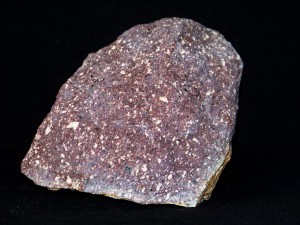
Porphyry, with large crystals visible in a finer surrounding – Source: Piotr Sosnowski, Wikimedia Commons.
The size of crystals in a rock is determined by how fast the rock cools down and solidifies. If the rock cools slowly, the crystals have time to grow from the liquid magma, forming large crystals that can be seen with the naked eye. If the rock cools quickly, the crystals do not have time to grow and solidify as tiny grains that are only visible under a microscope. Porphyry deposits must therefore have cooled in two stages, first very slowly deep in the Earth’s crust, and then very rapidly as the magma reaches shallow depths and rises to the surface very rapidly, for instance in a volcano. As the magma cools, fluids are driven off and carry with them dissolved metals such as gold, lead, tin, zinc, and of course copper.
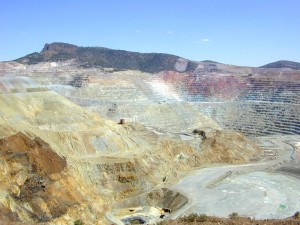
The Chino open-pit copper mine in New Mexico – Source: Eric Guinther, Wikimedia Commons.
When they are not driving Santa’s sleigh on Christmas night, reindeers live in different regions of northern Eurasia, including Scandinavia.
Over the past few decades, reindeer activities and reindeer farming in specific areas have had important ecological impacts. Reindeer graze and trample the vegetation covering the ground and the release of faeces and urine provides specific nutrients to the soil. This has damaged the lichen and moss-rich vegetation originally present, slowly replacing it with ‘lawns’ of nutrient-rich and digestible forage. The new vegetation type leads to what is called a positive feedback, where reindeer grazing leads to more digestible foliage, which enhances reindeer grazing, and so on. The loss of lichens also enhances the growth of coniferous trees.
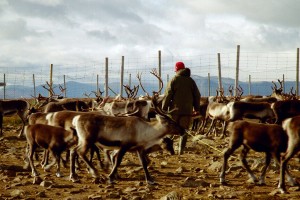
Reindeer herding in Sweden – Source: Mats Andersson, Wikimedia Commons.
These on-going disturbances have ultimately created a new stable ecological state in regions of reindeer herding. But they also have consequences for local climate, through changes in the surface properties of the land.
When radiation from the Sun reaches the surface of the Earth, it can be both absorbed by the land or reflected back to the atmosphere – generally a mixture of the two. The proportion of energy absorbed versus reflected depends on the properties of the ground, including its colour. This is what is called albedo. Ice, for example, reflects a majority of solar energy and has a high albedo. Darker surfaces such as oceans absorb more energy and have a low albedo. The more energy is absorbed, the warmer that particular region (although water and land will warm up differently).
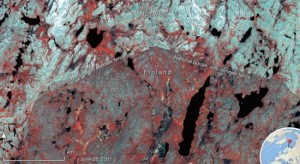
High-resolution satellite image of the border zone shared by Norway (northern half) and Finland (southern half), June 2001. A reindeer fence mirrors the border between the two countries. The difference in whiteness is due to more lichen coverage in Norway, with reindeer herding in Finland causing loss of lichen cover – Source: Grid Arendal Maps and Graphics Library.
The loss of lichen cover in reindeer herding areas has slowly reduced the whiteness and therefore the albedo of the land surface, changing the balance of solar energy reflected and absorbed in these regions. Reindeer can therefore have both ecological and climatic consequences, and studies have only recently started to investigate the potential positive or negative impacts of these changes in northern Scandinavia.
On these geological notes, a very merry Christmas to all!
Marion
